-
 Bitcoin
Bitcoin $107,275.1551
-0.32% -
 Ethereum
Ethereum $2,485.3056
1.77% -
 Tether USDt
Tether USDt $1.0005
0.03% -
 XRP
XRP $2.2223
1.31% -
 BNB
BNB $657.7608
1.39% -
 Solana
Solana $156.3566
3.02% -
 USDC
USDC $0.9999
0.01% -
 TRON
TRON $0.2791
1.09% -
 Dogecoin
Dogecoin $0.1651
0.45% -
 Cardano
Cardano $0.5738
2.78% -
 Hyperliquid
Hyperliquid $40.2672
5.82% -
 Bitcoin Cash
Bitcoin Cash $517.5487
5.30% -
 Sui
Sui $2.7981
-0.40% -
 Chainlink
Chainlink $13.3500
-0.36% -
 UNUS SED LEO
UNUS SED LEO $9.1220
1.12% -
 Avalanche
Avalanche $17.9515
-0.32% -
 Stellar
Stellar $0.2361
-0.44% -
 Toncoin
Toncoin $2.9423
2.33% -
 Shiba Inu
Shiba Inu $0.0...01145
-0.68% -
 Litecoin
Litecoin $86.1693
-0.63% -
 Hedera
Hedera $0.1493
0.64% -
 Monero
Monero $315.1374
1.81% -
 Polkadot
Polkadot $3.4002
-0.73% -
 Dai
Dai $1.0001
0.03% -
 Bitget Token
Bitget Token $4.5413
-1.35% -
 Ethena USDe
Ethena USDe $1.0002
-0.01% -
 Uniswap
Uniswap $7.1733
-0.57% -
 Aave
Aave $274.0465
-0.23% -
 Pepe
Pepe $0.0...09810
2.24% -
 Pi
Pi $0.5101
-3.10%
Is the monthly RSI bottom divergence + the weekly morning star a bargain hunting opportunity?
A monthly RSI bottom divergence paired with a weekly morning star pattern may signal a strong bullish reversal in crypto, especially when confirmed by volume and key support levels.
Jun 30, 2025 at 09:57 pm
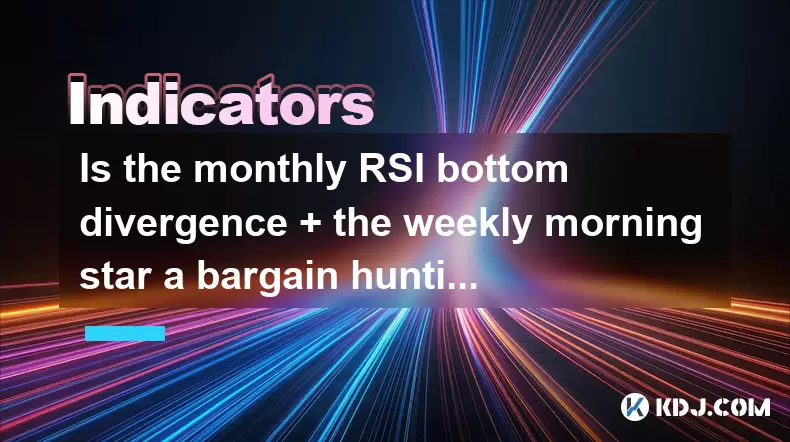
Understanding RSI Bottom Divergence in Monthly Timeframes
The Relative Strength Index (RSI) is a momentum oscillator commonly used to identify overbought or oversold conditions in the market. When traders refer to a monthly RSI bottom divergence, they're observing a situation where the price makes a lower low, but the RSI makes a higher low on the monthly chart. This suggests that while prices are falling, the downward momentum may be weakening.
In cryptocurrency trading, especially with highly volatile assets like Bitcoin or Ethereum, this kind of divergence can signal potential reversals. It's crucial to note that divergence alone isn't a confirmation of a reversal; it merely indicates a possible shift in momentum. Traders should look for additional signals such as volume spikes, candlestick patterns, or support/resistance levels before acting.
Decoding the Weekly Morning Star Pattern
The morning star is a bullish candlestick pattern typically found at the end of a downtrend. On the weekly chart, this formation becomes more significant due to the longer time frame, which filters out much of the noise seen in shorter intervals. The pattern consists of three candles: a large bearish candle, followed by a small-bodied candle (often a doji), and finally a large bullish candle.
When this pattern appears on the weekly chart after a sustained downtrend in crypto markets, it often signals a strong possibility of a trend reversal. The key here is confirmation—traders must wait for the third candle to close above the midpoint of the first candle to validate the pattern.
Combining Monthly RSI Divergence with Weekly Morning Star
Using both the monthly RSI bottom divergence and the weekly morning star together creates a confluence of technical indicators that can enhance the probability of a successful trade. The idea is that if both signals align, they reinforce each other and provide a stronger case for a potential bullish move.
For example, if Bitcoin has been declining for several months, showing a clear RSI bottom divergence on the monthly chart, and simultaneously forms a morning star pattern on the weekly chart, this could suggest that the downtrend is losing steam and buyers are starting to step in. However, even with this alignment, traders should not ignore risk management principles.
Practical Steps to Confirm These Signals in Crypto Markets
- Step 1: Identify the monthly RSI bottom divergence. Use an RSI period of 14 and ensure that the price makes a lower low while the RSI makes a higher low.
- Step 2: Switch to the weekly chart and look for the morning star pattern. Ensure all three components are present and confirmed.
- Step 3: Check volume during the formation of the morning star. A surge in volume on the third candle strengthens the validity of the pattern.
- Step 4: Look for nearby support levels or key psychological price zones that align with these signals.
- Step 5: Wait for a candle close above the resistance level formed by the morning star’s high to confirm entry.
Each of these steps plays a vital role in filtering out false signals and increasing the reliability of the setup.
Risk Management Considerations for Bargain Hunting
Even when both the monthly RSI divergence and weekly morning star appear aligned, entering a position without proper risk control can lead to significant losses. In crypto markets, volatility can cause rapid price swings that may stop out traders prematurely.
Traders should:
- Place a stop-loss below the lowest point of the morning star pattern.
- Limit position size to no more than 1–2% of total capital.
- Monitor for any bearish reversal patterns that might invalidate the setup.
- Avoid chasing entries if the price has already moved significantly after the pattern completes.
It’s also important to remember that technical analysis is not foolproof. Market sentiment, news events, and macroeconomic factors can override even the strongest technical setups.
Frequently Asked Questions
Q1: Can I use RSI divergence on time frames shorter than monthly?
Yes, RSI divergence can be applied to daily, weekly, or even hourly charts. However, the monthly divergence carries more weight due to its longer-term perspective and reduced susceptibility to short-term noise.
Q2: What if the morning star pattern fails after forming on the weekly chart?
A failed morning star is not uncommon in crypto markets. If the price continues to fall after forming the pattern, it’s best to exit the trade quickly. False breakouts occur frequently, especially around major news events or regulatory updates.
Q3: How reliable is the combination of RSI divergence and morning star in altcoins?
While this combination works well in major cryptocurrencies like BTC and ETH, it may produce less reliable results in smaller-cap altcoins due to their erratic price behavior and low liquidity. Extra caution is advised when applying these strategies to lesser-known tokens.
Q4: Should I combine these signals with other indicators like MACD or moving averages?
Yes, adding complementary tools like the MACD or moving averages can help filter out weak signals and improve overall accuracy. For instance, a rising MACD line alongside a morning star adds further confirmation to the bullish scenario.
Disclaimer:info@kdj.com
The information provided is not trading advice. kdj.com does not assume any responsibility for any investments made based on the information provided in this article. Cryptocurrencies are highly volatile and it is highly recommended that you invest with caution after thorough research!
If you believe that the content used on this website infringes your copyright, please contact us immediately (info@kdj.com) and we will delete it promptly.
- Coinbase, Altcoins, and Listings: What's the Buzz?
- 2025-07-01 00:30:11
- Chainlink's Bullish Signals: Investors Bet on Long-Term Value
- 2025-07-01 00:50:12
- CICADA Finance Soars on BNB Chain: A TGE Deep Dive
- 2025-07-01 01:30:11
- MicroStrategy's Bitcoin Bet: Holdings, Sell-Off Concerns, and S&P 500 Dreams
- 2025-07-01 01:30:11
- XRPL EVM Sidechain: Ethereum dApps Unleashed on XRP Ledger!
- 2025-07-01 01:35:11
- Bybit, Kraken, and Tokenized Stocks: A New Era for Trading?
- 2025-07-01 00:30:11
Related knowledge
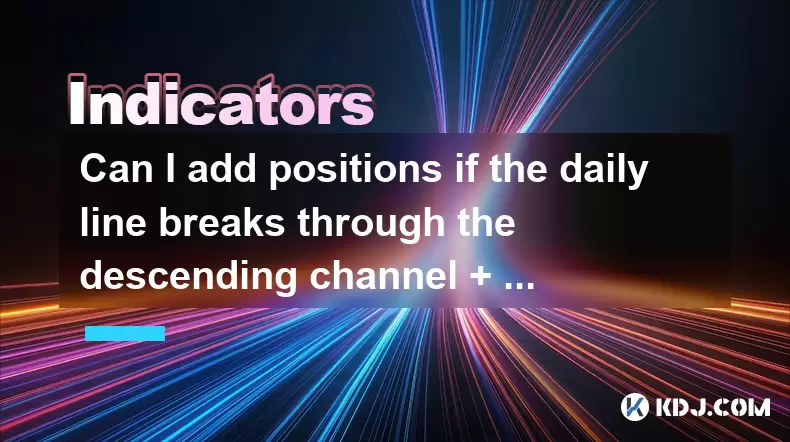
Can I add positions if the daily line breaks through the descending channel + the 30-minute moving average is in a bullish arrangement?
Jun 30,2025 at 11:00pm
Understanding the Descending Channel BreakoutWhen a daily line breaks through a descending channel, it indicates a potential shift in market sentiment from bearish to bullish. A descending channel is formed by drawing two parallel trendlines, where the upper trendline connects the lower highs and the lower trendline connects the lower lows. A breakout o...
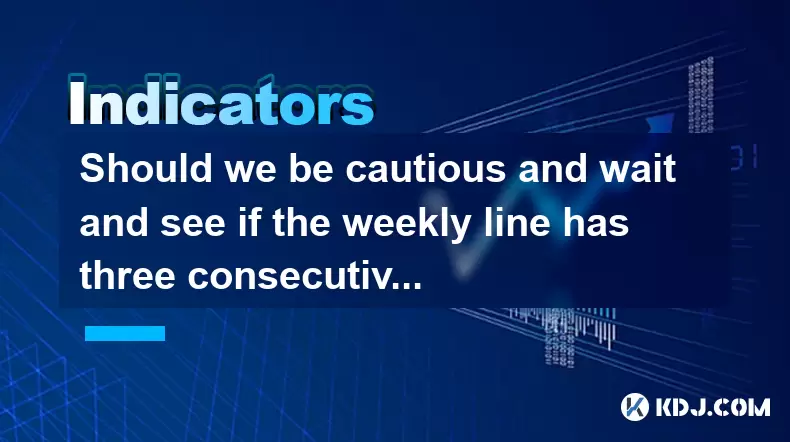
Should we be cautious and wait and see if the weekly line has three consecutive Yin lines + the daily MACD green column enlarges?
Jul 01,2025 at 12:42am
Understanding the Weekly Three Consecutive Yin Lines PatternIn technical analysis, three consecutive Yin lines on a weekly chart indicate a strong bearish trend. Each Yin line represents a week where the closing price is lower than the opening price, signaling consistent selling pressure. When this pattern appears three times in succession, it often sug...
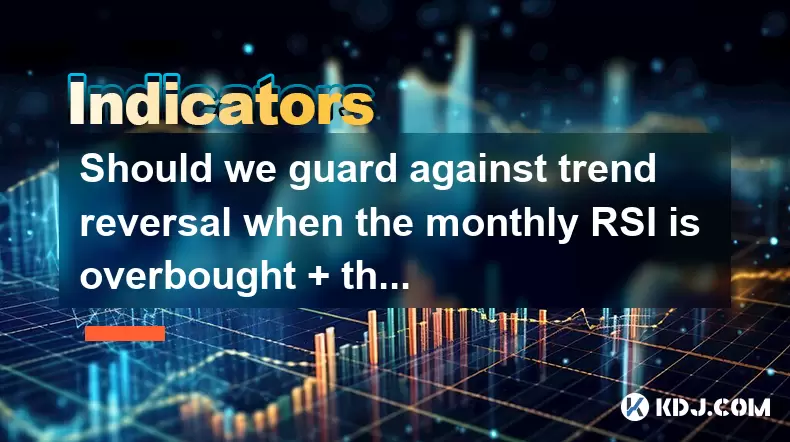
Should we guard against trend reversal when the monthly RSI is overbought + the weekly line has a long upper shadow?
Jun 30,2025 at 11:35pm
Understanding RSI Overbought Conditions in CryptocurrencyThe Relative Strength Index (RSI) is a momentum oscillator commonly used in technical analysis to identify overbought or oversold conditions in an asset. When the monthly RSI of a cryptocurrency reaches above 70, it is generally considered overbought, suggesting that the asset may be due for a pul...

Is the monthly RSI bottom divergence + the weekly morning star a bargain hunting opportunity?
Jun 30,2025 at 09:57pm
Understanding RSI Bottom Divergence in Monthly TimeframesThe Relative Strength Index (RSI) is a momentum oscillator commonly used to identify overbought or oversold conditions in the market. When traders refer to a monthly RSI bottom divergence, they're observing a situation where the price makes a lower low, but the RSI makes a higher low on the monthl...
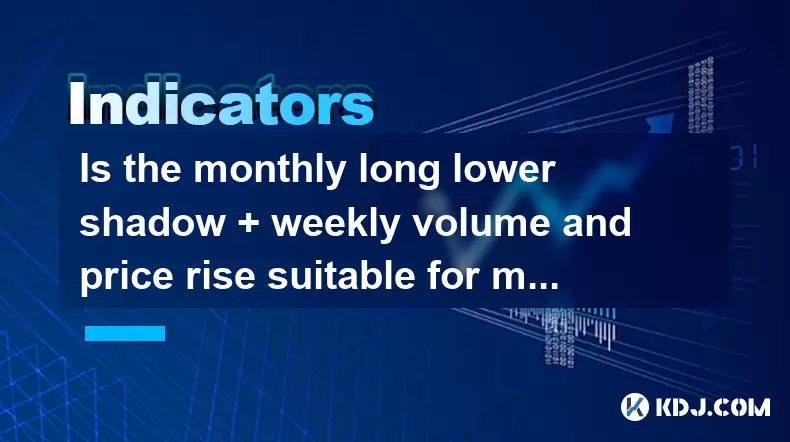
Is the monthly long lower shadow + weekly volume and price rise suitable for mid-term layout?
Jul 01,2025 at 01:29am
Understanding the Monthly Long Lower Shadow PatternA monthly long lower shadow candlestick pattern occurs when the price of a cryptocurrency drops significantly during the month but then rebounds to close near or above the opening price. This creates a candle with a long wick below and a relatively small body. In technical analysis, this pattern is ofte...
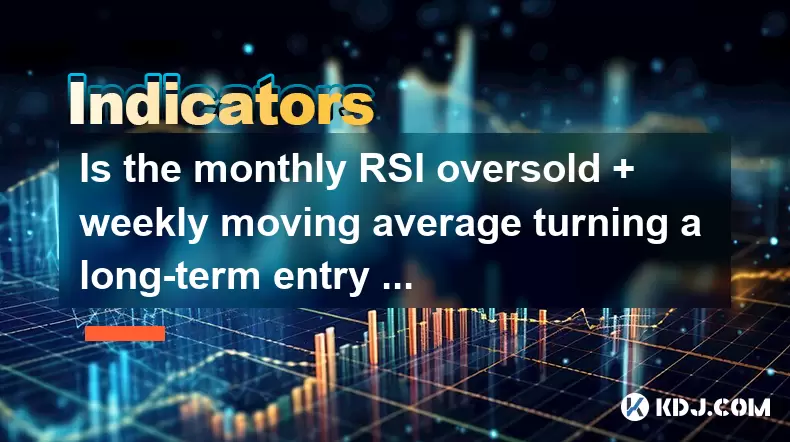
Is the monthly RSI oversold + weekly moving average turning a long-term entry signal?
Jun 30,2025 at 11:42pm
Understanding RSI and Its Role in Cryptocurrency TradingThe Relative Strength Index (RSI) is a momentum oscillator commonly used by traders to identify overbought or oversold conditions in the market. In the context of cryptocurrency, where volatility reigns supreme, understanding how RSI behaves on different timeframes becomes crucial. When the monthly...

Can I add positions if the daily line breaks through the descending channel + the 30-minute moving average is in a bullish arrangement?
Jun 30,2025 at 11:00pm
Understanding the Descending Channel BreakoutWhen a daily line breaks through a descending channel, it indicates a potential shift in market sentiment from bearish to bullish. A descending channel is formed by drawing two parallel trendlines, where the upper trendline connects the lower highs and the lower trendline connects the lower lows. A breakout o...

Should we be cautious and wait and see if the weekly line has three consecutive Yin lines + the daily MACD green column enlarges?
Jul 01,2025 at 12:42am
Understanding the Weekly Three Consecutive Yin Lines PatternIn technical analysis, three consecutive Yin lines on a weekly chart indicate a strong bearish trend. Each Yin line represents a week where the closing price is lower than the opening price, signaling consistent selling pressure. When this pattern appears three times in succession, it often sug...

Should we guard against trend reversal when the monthly RSI is overbought + the weekly line has a long upper shadow?
Jun 30,2025 at 11:35pm
Understanding RSI Overbought Conditions in CryptocurrencyThe Relative Strength Index (RSI) is a momentum oscillator commonly used in technical analysis to identify overbought or oversold conditions in an asset. When the monthly RSI of a cryptocurrency reaches above 70, it is generally considered overbought, suggesting that the asset may be due for a pul...

Is the monthly RSI bottom divergence + the weekly morning star a bargain hunting opportunity?
Jun 30,2025 at 09:57pm
Understanding RSI Bottom Divergence in Monthly TimeframesThe Relative Strength Index (RSI) is a momentum oscillator commonly used to identify overbought or oversold conditions in the market. When traders refer to a monthly RSI bottom divergence, they're observing a situation where the price makes a lower low, but the RSI makes a higher low on the monthl...

Is the monthly long lower shadow + weekly volume and price rise suitable for mid-term layout?
Jul 01,2025 at 01:29am
Understanding the Monthly Long Lower Shadow PatternA monthly long lower shadow candlestick pattern occurs when the price of a cryptocurrency drops significantly during the month but then rebounds to close near or above the opening price. This creates a candle with a long wick below and a relatively small body. In technical analysis, this pattern is ofte...

Is the monthly RSI oversold + weekly moving average turning a long-term entry signal?
Jun 30,2025 at 11:42pm
Understanding RSI and Its Role in Cryptocurrency TradingThe Relative Strength Index (RSI) is a momentum oscillator commonly used by traders to identify overbought or oversold conditions in the market. In the context of cryptocurrency, where volatility reigns supreme, understanding how RSI behaves on different timeframes becomes crucial. When the monthly...
See all articles

























































































